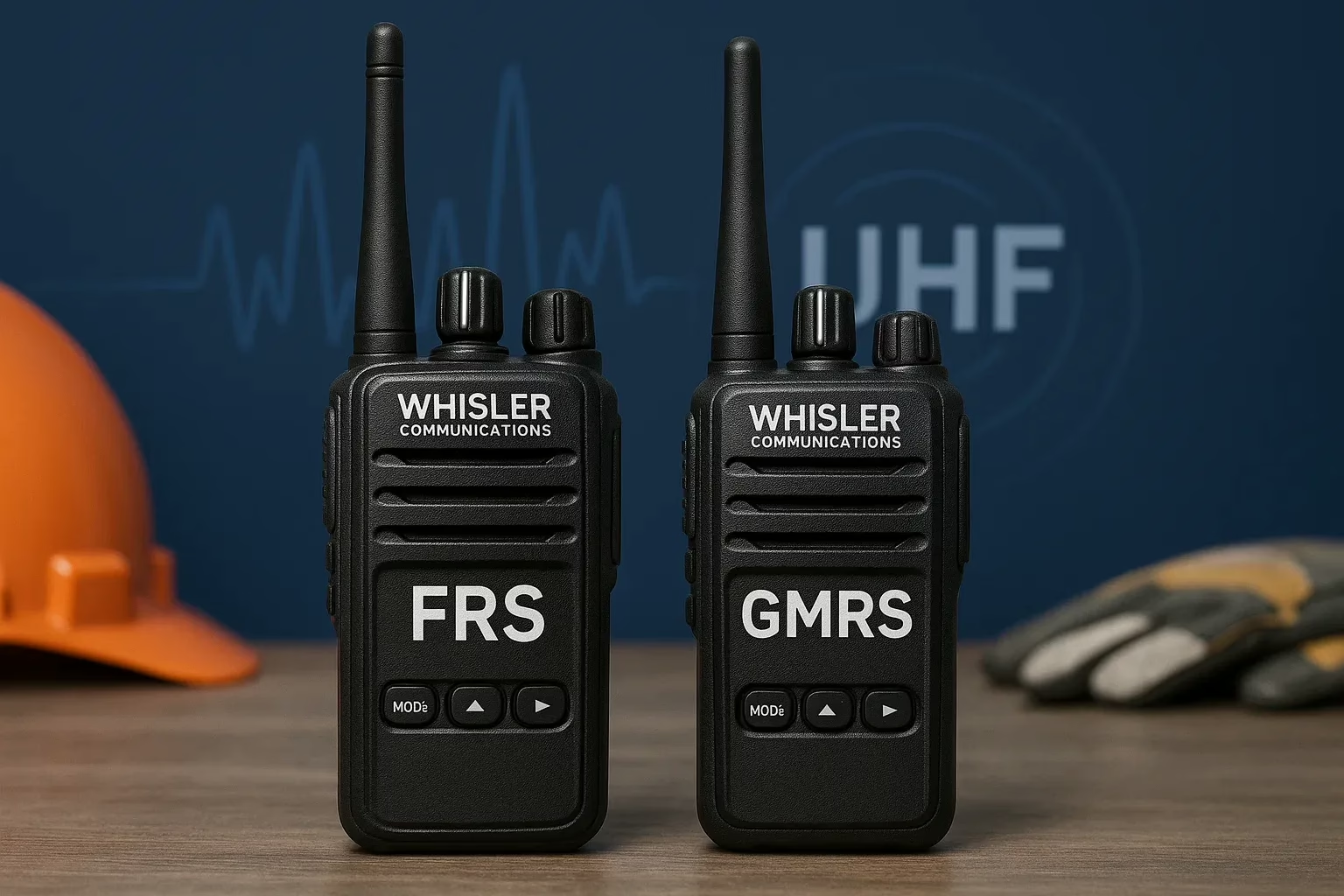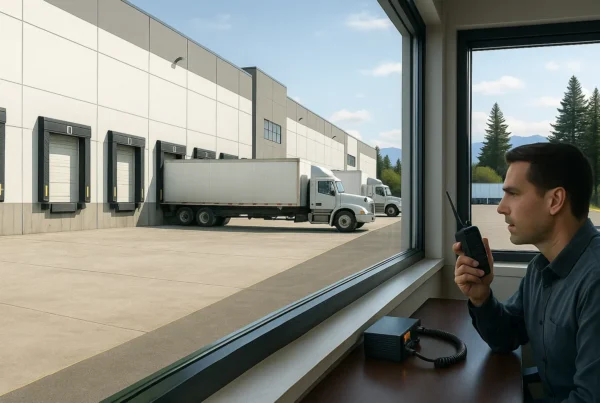Choosing the right radio service is important for teams that rely on clear and dependable communication. FRS and GMRS are two of the most common personal radio services in the United States. Both operate on UHF frequencies regulated by the FCC, but they are designed for different levels of performance. Understanding these differences will help you choose equipment that fits your range, environment, and job requirements.
What Is FRS
FRS, or Family Radio Service, is built for simple, short range communication. It is often used for light commercial tasks, small facilities, hospitality teams, retail coordination, and basic event operations.
Key characteristics of FRS:
- Maximum power output up to 2 watts
- Fixed antennas
- 22 channels
- Real world range of 0.5 to 1.5 miles
- No license required
FRS radios are cost effective, easy to operate, and suitable for teams working within close proximity.
What Is GMRS
GMRS, or General Mobile Radio Service, supports higher power, better range, and the ability to use repeaters. It is used by off road groups, farms, large properties, field crews, and users who need stronger performance in challenging environments.
Key characteristics of GMRS:
- Power output up to 50 watts on mobile and base radios
- Handheld units typically operate at 1 to 5 watts
- Detachable or upgradeable antennas
- 30 channels including 8 repeater channels
- Long distance potential
- FCC license required
GMRS enables wider coverage and more flexibility, especially for users who need reliable communication during travel or across large sites.
FRS and GMRS at a Glance
Although they share parts of the same UHF spectrum, the differences in power, equipment options, and channel structure create very different performance levels.
Power Output:
- FRS up to 2 watts
- GMRS up to 50 watts depending on the unit
Channel Count:
- FRS has 22 channels
- GMRS has 30 channels including repeater access
Licensing:
- FRS requires no license
- GMRS requires an FCC license
Range:
- FRS usually covers 0.5 to 1.5 miles
- GMRS handhelds reach 1 to 5 miles
- GMRS mobile or repeater systems can reach 10 to 20 plus miles
Your choice depends on your environment and how far your team needs to communicate.
Understanding the Frequencies
Both services operate between 462 and 467 MHz. Equipment limitations determine how users access these frequencies.
FRS Channel Use:
- Channels 1 to 7 shared with GMRS
- Channels 8 to 14 FRS only
- Channels 15 to 22 shared with GMRS
GMRS Channel Use:
- Channels 1 to 7 shared with FRS
- Channels 15 to 22 shared with FRS
- Channels 23 to 30 GMRS only with 8 repeater channels
Repeater channels allow GMRS systems to reach far beyond standard handheld range.
Licensing Requirements
FRS:
No license needed. Anyone can use FRS immediately.
GMRS:
Requires an FCC license. The license is valid for ten years and covers the entire household. No testing is required.
Real World Range
Environmental conditions play a major role in performance.
FRS:
- 0.5 to 1.5 miles depending on buildings, trees, and terrain
GMRS:
- 1 to 5 miles for handheld radios
- 10 to 20 plus miles for vehicle mounted or base radios
- 20 to 30 miles or more through repeater systems
For users who need dependable communication across long distances, GMRS is usually the stronger option.
Equipment Differences
FRS is designed for simplicity. GMRS is designed for capability.
FRS Equipment:
- Fixed antennas
- Lower power output
- Basic walkie talkie design
- Ideal for short range tasks
GMRS Equipment:
- Higher power levels
- Upgradeable antennas
- Repeater compatibility
- Suitable for rugged environments and wide area operations
Can FRS and GMRS Work Together
Yes. They can communicate on the shared channels.
However, FRS cannot access GMRS only channels or repeaters. Mixed groups should operate on shared channels for consistent communication.
When to Choose FRS
FRS is a good fit for:
- Light commercial work
- Retail and customer service teams
- Small events
- Indoor facilities
- Short distance operations
Choose FRS when simplicity and convenience are the priority.
When to Choose GMRS
GMRS is a better choice for:
- Off road users
- Farms and acreages
- Emergency and preparedness groups
- Outdoor operations
- Teams that rely on vehicle or repeater systems
Choose GMRS when you need stronger equipment and greater range.
Which Should You Choose
Choose FRS if you need basic, license free communication within a short distance.
Choose GMRS if you want more power, better range, and the option to expand your system.
Upgrade Your Communication System with Whisler Communications
Whisler Communications supplies professional grade radio solutions for teams that need dependable performance. Whether you are comparing FRS and GMRS or moving toward commercial grade options like Kenwood and Icom, our specialists can help you choose the right system for your range, terrain, and budget.
Contact us today to get matched with the ideal communication setup for your operation.




